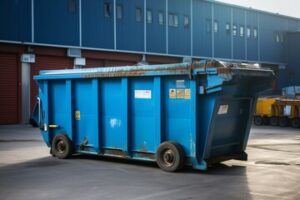
In the labyrinth of legal battles, slip and fall accidents emerge as a prevalent battleground for injury claims. The seemingly innocuous act of slipping on a wet floor or tripping over a hazard can lead to significant repercussions, both physically and legally.
As such incidents continue to rise, so do the complexities of navigating the legal terrain surrounding them. Contact Kevin A. Adamson, P.C. for more information.
Rising Incidence:
The incidence of slip and fall accidents is on the rise, posing a significant challenge for individuals and establishments alike. Despite advancements in safety standards and awareness campaigns, these incidents persist in various environments, from public thoroughfares to private properties. Factors contributing to this rise include shifting demographics, aging infrastructure, and changing weather patterns. As urban populations swell and infrastructural maintenance lags behind, the risk of encountering hazards such as uneven pavements or poorly lit walkways increases.
Moreover, the aging population adds another dimension to the rising incidence of slip and fall accidents. Older adults are particularly vulnerable due to factors such as decreased balance, diminished mobility, and slower reaction times. As the proportion of elderly individuals in the population grows, so does the likelihood of slip and fall incidents occurring, especially in environments not adequately adapted to their needs. Additionally, the proliferation of distractions, such as smartphones, further exacerbates the risk, as individuals may be less attentive to their surroundings.
Furthermore, environmental factors contribute significantly to the rising incidence of slip and fall accidents. Extreme weather events, including heavy rainfall and snowstorms, can create hazardous conditions, such as slippery surfaces and icy pathways. Inadequate drainage systems and insufficient maintenance exacerbate these risks, amplifying the potential for accidents. Additionally, the proliferation of temporary structures, such as outdoor dining setups, introduces new hazards, further complicating efforts to mitigate risks effectively.
Addressing the rising incidence of slip and fall accidents requires a multifaceted approach that encompasses preventive measures, infrastructure improvements, and public awareness campaigns. Proactive maintenance and regular inspections of public spaces and private properties can help identify and rectify hazards before accidents occur. Furthermore, educating the public about the risks associated with slip and fall incidents and promoting responsible behavior can foster a culture of safety consciousness. By addressing the root causes of these accidents and implementing targeted interventions, stakeholders can work towards reducing their incidence and minimizing their impact on individuals and communities.
The Legal Quandary:
The legal aftermath of slip and fall accidents presents a complex quandary for all parties involved. Establishing liability hinges on a nuanced understanding of legal principles such as duty of care, negligence, and contributory negligence. Property owners are entrusted with a duty to maintain safe premises for visitors, but the extent of this obligation varies depending on factors such as the type of property and the nature of the hazard. This ambiguity often leads to contentious legal battles as both plaintiffs and defendants grapple with interpreting and applying these legal concepts to the specific circumstances of the case.
Navigating the legal maze of slip and fall cases requires a meticulous examination of the evidence and legal precedents. Plaintiffs must demonstrate that the property owner’s actions or inaction directly contributed to the accident, while defendants may seek to refute these claims by arguing contributory negligence on the part of the injured party. Each side presents its version of events, supported by witness testimonies, expert opinions, and other forms of evidence, in an attempt to sway the court in their favor. Consequently, legal proceedings can become protracted and convoluted, further complicating the resolution of these cases.
Furthermore, the legal quandary extends beyond the courtroom, encompassing the intricacies of insurance coverage and settlement negotiations. Insurance companies often play a pivotal role in slip and fall cases, as they may be responsible for compensating injured parties or defending property owners against liability claims. Negotiating fair settlements requires a delicate balance of legal expertise, financial considerations, and risk assessment, as both parties seek to protect their interests while reaching a mutually acceptable resolution. However, disagreements over liability, damages, or coverage may escalate into full-fledged legal battles, prolonging the resolution process and adding to the complexity of the situation.
The legal quandary surrounding slip and fall accidents underscores the importance of legal representation and advocacy. Both plaintiffs and defendants rely on skilled attorneys to navigate the intricacies of the legal system, protect their rights, and advocate for their interests. Attorneys play a crucial role in gathering evidence, formulating legal arguments, and representing their clients’ interests in court, arbitration, or mediation proceedings. Their expertise and experience can significantly influence the outcome of a case, shaping the resolution of legal disputes and ensuring that justice is served, to the best extent possible, within the confines of the law.
The legal quandary inherent in slip and fall cases reflects the complexities of liability, negligence, and evidentiary challenges that characterize these incidents. Navigating this legal landscape requires a thorough understanding of legal principles, strategic advocacy, and effective negotiation skills. By addressing these challenges with diligence and expertise, stakeholders can work towards achieving equitable resolutions and fostering accountability in the aftermath of slip and fall accidents.
Duty of Care:
The duty of care is a foundational legal principle that underpins liability in slip and fall cases. Property owners owe a duty of care to visitors and guests who enter their premises, requiring them to take reasonable steps to ensure their safety. This duty extends to maintaining the premises in a reasonably safe condition, promptly addressing hazards, and providing warnings when necessary. However, the scope of this duty varies depending on factors such as the nature of the property, the relationship between the parties, and the foreseeability of harm.
In slip and fall cases, establishing a breach of the duty of care often revolves around demonstrating negligence on the part of the property owner. Plaintiffs must show that the property owner failed to exercise reasonable care in maintaining the premises or addressing known hazards, thereby creating an unreasonable risk of harm. This may involve proving that the property owner knew or should have known about the hazard and failed to take appropriate action to mitigate it. Conversely, defendants may argue that they fulfilled their duty of care by implementing reasonable safety measures or that the hazard was unforeseeable and beyond their control.
Moreover, the duty of care extends beyond property owners to include other parties who may have control over the premises or contribute to the maintenance of safe conditions. For example, tenants, property managers, contractors, and maintenance personnel may also bear responsibility for ensuring the safety of visitors. Understanding the complex web of responsibilities and relationships surrounding the duty of care is essential in determining liability and allocating accountability in slip and fall cases.
Negligence and Liability:
Proving negligence is pivotal in slip and fall cases. Plaintiffs must demonstrate that the property owner’s actions or inaction directly contributed to the accident. Conversely, defendants may argue contributory negligence, asserting that the injured party’s behavior played a role in their own misfortune.
Complexities in Evidence:
Gathering evidence in slip and fall cases can be challenging. Factors such as lack of surveillance footage, conflicting testimonies, or the transient nature of hazards can complicate matters. Legal teams must employ various strategies to substantiate claims and counterarguments effectively.
Heightened Awareness and Prevention:
In light of escalating legal battles, stakeholders are increasingly prioritizing proactive measures to prevent slip and fall accidents. Enhanced safety protocols, regular inspections, and comprehensive risk assessments are among the strategies employed to mitigate potential hazards.
As slip and fall accidents continue to lead to injury claims, the legal landscape surrounding these incidents remains fraught with complexities. Navigating the maze of liability, negligence, and evidentiary challenges requires meticulous attention to detail and adept legal maneuvering. By fostering heightened awareness and preventive measures, stakeholders can strive to reduce the occurrence of such incidents and minimize their legal ramifications.

